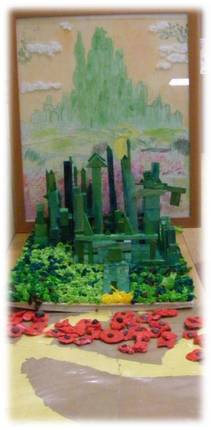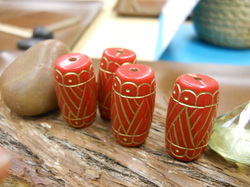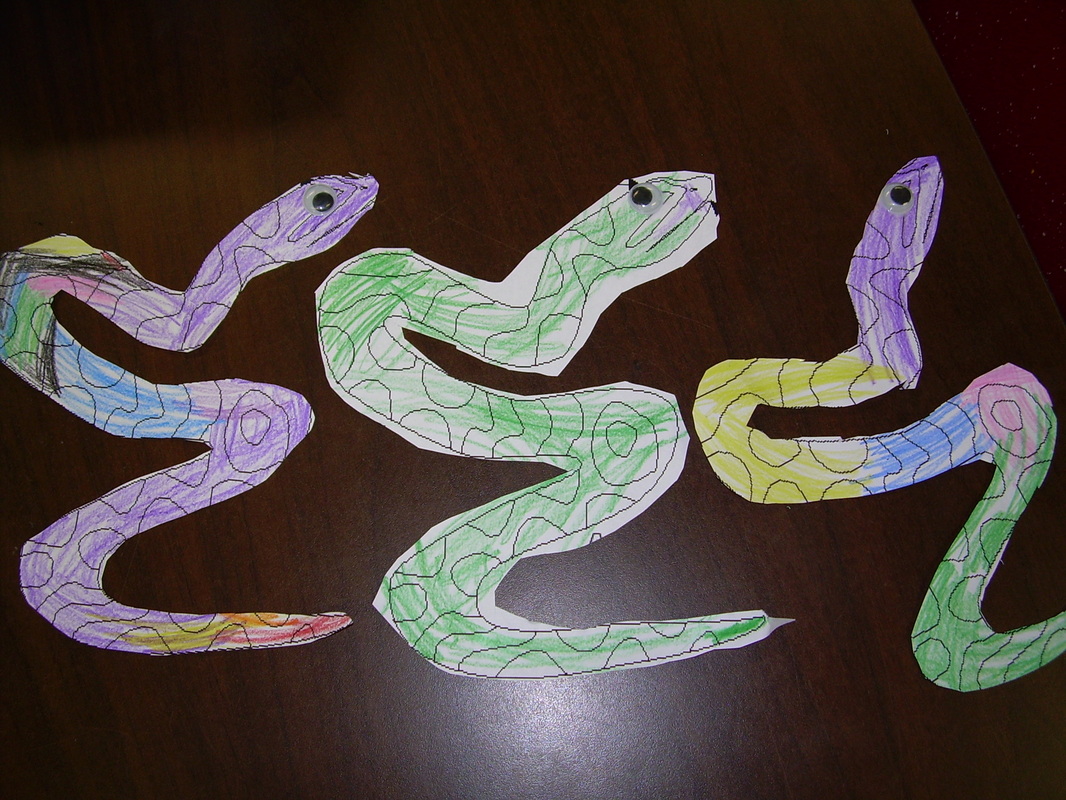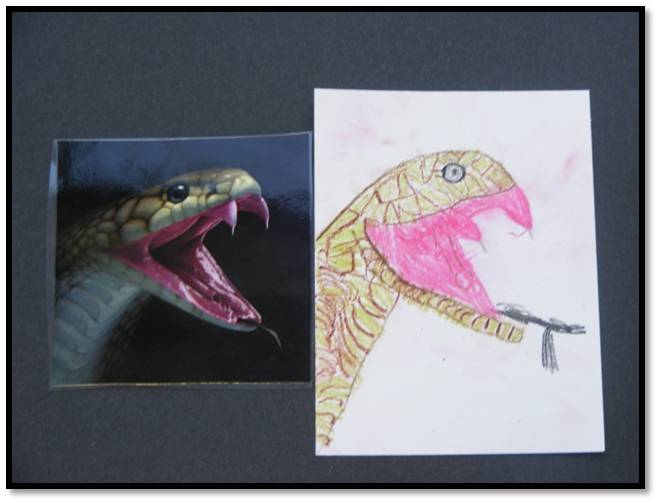 I want to use this post to conclude my thoughts and connect some of the ideas I shared here on this website. First, I am no way stating that a thematic style of teaching is horrific and damaging to the child's learning. I am suggesting that there are more updated styles of teaching that there are more updated ways to enhance children's critical thinking skills and problem solving skills. With this being said, I see many benefits to emergent curriculum following either path of the Project Approach and it's three step process or the Reggio Emilia Approach. Both are very similar and strongly suggest the importance of a longitudinal study of a topic that is child-directed. I think it would be beneficial if all preschools move in this direction to build a strong foundation of research skills, skills that will be necessary when furthering their education. So let's move away from this idea that teachers feed information to children and move closer to the acknowledgment that children's are capable to create and develop their own learning when provided with an environment and activities that encourage them to dig deeper for answers. Dittos and coloring pages are not how children make connections, so we really need to evaulate their use in the classroom. I think we as educators can think more outside the box than we give ourselves credit for. So lets move away from prescribed kits that relate nothing to the culture of our classroom to develop authentic lesson plans that children can relate to. Let's look at the child and let them take the lead for once. A great blog highlights some of these key components and her personal experience transitioning from thematic curriculum to emergent curriculum.
As teachers, we automatically want what is best for children. This means we want children and students to know their colors, ABC's, number identification because we know the importance of this knowledge for their future learning. Along with academics, we as teachers want to make sure the whole child is developing "as they should", meaning their social/emotional development, physical development, and cognitive development. As a former preschool and infant/toddler teacher, I know first hand how important it is for children to be able to express their thoughts, ideas and feelings to an adult or another child. This is a skill that impacts how children relate to others or handle new situations. With this being said, for the first few years children have a hard time coming up with words to express these emotions and tend to develop motor skills like walking, running, or using large movements first. Young children are typically attracted to the arts; the bold colors, lines, abstract pieces and still pieces. Most children learn through physical touch so messy mediums such as paint or clay are innately attractive to children, most children.
I find that the arts are a form of stress relief in my life. I may not be good at painting or drawing but when I sit down at an easel and paint, I feel a calming sensation. Many children are the same way. Art is a form of expression that many start investigating at an early age, if presented. Young children will typically paint what is on their mind, using colors or strokes to resemble the way they are feeling. I have have encountered many situations of children feeling frustrated. One calming technique I use is to have children draw to express their feelings of frustration. Many children will usually draw sad or angry faces, some will use big wide strokes covering the whole page and others might draw "beautiful" pictures to help them cope with the situation. Either way, I try to provide them with an outlet of expressing their feelings in a productive way.
Knowing that art can be an expression of one's self, I have a hard time understanding how it has moved to an adult directed subject. Art just like anything else does require a teacher or adult to help model and introduce tools or techniques that can be used to obtain a student's goal, however what I see in preschools all around are coloring sheets replacing open ended art. I see teachers telling children what an end product should look like using their own model as a reference which can be frustrating and annoying for a young child who has not yet developed the fine motor skills that you as an adult have. When we provide children with predrawn items, we are asking them to remove their ideas of what this particular item looks like leaving little room for dialogue and deep thinking. When we ask children to draw their own ideas, using a real life picture if they suggest, then we can talk about the shape, the parts they see, the colors and texture of that object. We as a group or partnership investigate the topic at hand so children develop an understanding and relationship with the subject. Sometimes our classrooms will provide a real picture of the object, for example a snake. Providing a real picture is different from a cartoon coloring sheet in that it is predrawn by a human depicting that person's ideas on how all snakes should look. When using real pictures you as a teacher are providng the students with materials that are found in their world/environment and using it as an investigative tool rather than a model. Using a real picture of an item or what can be termed "provocation", still leaves the interpretation of the object in the child's hands rather than just leaving them with one option: color. When my 5 year old preschoolers sat down to work on the snake below, I as the teacher modeled research like questions: "What do you think the snake feels like? What would make his skin feel that way? What do you see in his mouth? Why would he have those in his mouth?". They picked out attributes that I myself did not think of which helped me develop a deeper understanding of snakes.
Bottom line to me is the idea of having a child color the picture provided or create a representation of what they think the object looks like, feels like, etc.
Photo 1 Photo 2 Think about the experiences each child has had, the pleasure, and fulfillment. Think about what they have gained and their impression of art, along with the ability to express themselves artistically. Please watch this TED talk about the creativity in education. *The picture to the right was drawn by a five year old little girl in my preschool classroom. This was a small group exprience in which I was there to facilitate questions and information gathering.
An exert from The 100 Languages
- Loris Malaguzzi
" The child has
a hundred languages
(and a hundred hundred hundred more)
but they steal ninety-nine.
The school and the culture
separate the head from the body.
They tell the child:
to think without hands
to do without head
to listen and not to speak
to understand without joy
to love and to marvel
only at Easter and at Christmas.
They tell the child:
to discover the world already there
and of the hundred
they steal ninety-nine.
They tell the child:
that work and play
reality and fantasy
science and imagination
sky and earth
reason and dream
are things
that do not belong together.
And thus they tell the child
that the hundred is not there.
The child says:
No way. The hundred is there."  Hello! Welcome to my blog, my name is Lydia. I should first introduce myself as a mother of three (as this is the most important role I play), a wife, an educarer (combining both an educator and caregiver since I work in the field of birth to five), an administrator, and a student. I am no stranger to the immense work load a working mom, student, and career woman have but I enjoy challenging myself and educating myself on things I love like the passion I feel for quality education and care. I have been in the field of early education for 8 years and throughout my career, I have faced many challenges that test my philosophy of early education. "These tests" help me to reflect on what I do as an educarer, why I do it and who it affects. Working with infants/toddlers, and preschool aged children, I am being challenged frequently on the capability of the young children. Many times I defend children's capabilities and their investment in research and problem solving abilities Child care is unfortunately portrayed as a place of play with no learning happening. According to some, elementary school is where teachers teach and students learn. One of the main reasons people feel this way is due to this misconception that during preschool (and younger years), all they do is play with no real emphasis on academics or learning. Learning is misconceptualized as a top down approach where teachers share their knowledge and feed children education, very much a top down leadership; I as the teacher tell you what to do, how and why and the student then learns the material by hearing about the material once. Fortunately research has come a long way in, highlighting the importance of play in a young child's development and foundation to their learning. Not only is play a foundation but when incorporated correctly, the child is able to create their own learning through the experiences and reflection offered in their play. I will take this time to briefly explain my understanding of two common curriculums used in a preschool or infant/toddler setting. The first is a thematic approach. The concept theme is defined as "a subject or topic of discoursewhich can be translated to teachers in many ways. Themes carried out in the classroom are typically teacher directed, meaning subjects that teachers feel are important in studying in the classroom. Most themes follow a yearly pattern starting at the beginning of the year, studying friends/relationships/oneself and moving to the direction of seasons and holidays. Other topics may be discussed but as I said, many themes used are related to the norms of society.Themes tend to last for a week depending on the subject. When researching what type of activities teachers put out when engaging in a thematic approach, I found that many use kits that can either be purchased on-line or provided direct instructions on how to create activities oneself. An example of such a website is provided. Kits used can often contain activities that highlight specific content area goals such as matching colors, working with patterns, or identifying numbers or letters. Children can typically be found sitting at desks to work on these activities which usually take on the form of worksheets, dittos, or brighlty colored cut-outs. This is not to say that all curriculum following a thematic approach uses worksheets, dittos, or brightly colored cut-outs, but the many websites I explored suggested the use of these items to zoom in on children's learning on the designated goals set out for them. Themes consistently rotate as I pointed out before and the interesting thing about themes is when used, all areas in the classroom surround this one theme. For example, if the theme for the week is Spring, the room tends to be transformed into a Spring season. Teachers decorate the classroom with Spring apparrel: cut outs of flowers are placed on the bulletin board, dittos or color by number pictures of flowers, baby lambs, or baby chicks are set out and flower feet surround the windows. All of these activities have nothing to do with the weather changing or the Earth's position relative to the sun which really defines what makes spring spring. Instead, teachers tend to set out "cute", baby animal pictures or pastel colors when working with arts and crafts ideas to capture the idea of spring. Children are left with no room to be investigative as thematic teaching tells children what they need to know. Themes are successful in many schools as they provide teachers with a day to day, week to week, and sometimes month to month lesson plan that teachers can tweek from year to year but have a good expectation and layout of how the year will go and what goals they are looking for. But are the children benefitting from this type of curriculum? Are children able to experience deep thinking, inquiry, or initiation skills?
The other type of curriculum I see more and more is emergent curriculum. Like the thematic approach there are many interpretations as to what it means to be emergent so I have used many of the defintions to create my own understanding. Emergent curriculum is based on the interests of children gained by observations, dialogue and ancedotal notes that capture children's curiosity. When curriculum highlights an interest of children, they become more invested in the activities making the meaning of what they learn more concrete and meaningful. I can compare this to us as adults who tend to be more engaged when classes are directly related to our major or field of study rather than a general class that is taken to meet requirements. An emergent curriculum is not set in stone rather a fluid exchange of what children are curious in which then leads teachers to develop a curriculum that investigate children's questions further. An educators job in this style of teaching is designing the curriculum around open ended experiences to enhance the child's knowledge while tying in goals and standards. Emergent curriculum is not developed weeks in advance, rather it is a topic that comes about in a natrual way lasting anywhere from one week to months, again depending on the interests of the children. It may start with a child's question, an observation of a child working with a particular material for several days, or a happening that has affected a child's life in a positive or negative way. Regardless, emergent curriculum starts with the child at the center of the curriculum and branches out to encompass standards and goals.
According to research developed in the past few years, children learn best through hands on, open ended experiences that are of interest to them. I have worked with both types of curriculum and I find that emergent curriculum is more flexible and professionaly stimulating. This means that I do not prepare my curriculum weeks in advance aiding in my accountabililty to the interests of the children. I really have to pay attention to what children are playing with, how they are playing with the materials, and what they want to know more about. I myself become a researcher, aiding in the development of my professional skills. This spur of the moment type planning may not be enticing to all as some teachers are very organized and like to plan, but it also develops your flexibility and creativeness as a teacher. I do not want to create an impression tht this style of teaching cannot be accomplished if you are a planner. If children have an interest in the work of ambulance drivers then I know I can plan for a visit from the EMS, a visit to the hospital, a letter to an EMS driver and dramatic play gear that represent EMS drivers. A week can be planned ahead of time keeping in mind that the curriculum is a working document that can be changed and adjusted. With this being said, I leave open activities on purpose to encompass questions that may arise when we discuss at large group time the jobs and EMS driver would have to be involved in. The video I have attached is a great way to explore how teachers utilize emergent curriculum and the importance for children's development.
One thing to keep in mind when I disucss emergent curriculum; the curriculum can study more than one interest at a time which can develop into projects. A project is a topic that is being broken apart into easily investigated parts. So for example if a few children were interested in insects the teacher might bring in a few insects she found at her home, they may go on an insect hunt around the school, bring them into their classroom and look through magnifying glasses to explore them further. Questions may be generated about what kind of insect it is, which then easily transitions into the differences between insects which then may naturally transition into the body parts of an insect. The difference between emergent curriculum and theme based curriculum is that if the children are not interested in the body parts but the food they eat, then an emergent curriculum would follow the topics the children want to explore. The theme based might briefly touch on the foods but would quickly jump back on track to the activities based around the insect body parts. I alway want to clarify that the emergent curriculum in no way states that because one child may be interested in insects, the whole classroom will have to learn about insects. Rather small groups may be formed based on similar interests. Eventually the whole classroom may become interested in insects but it is not forced upon every child. Instead, activities may be presented throughout the classroom in different areas of the room so that children can or don't have to engage with it. Several interests can go on at one time, creating a varied curriculum that provides depth to learning. To describe further, a copy of a curriculum I once used is available below.
There are pros and cons to both types of curriculum and I am in no way telling teachers which curriculum they must use but according to how we know children ages birth to five years of age learn best, I have to ask myself if using a teacher inspired curriculum is really the best approach to children's development. We have to think about our end goals, and if our end goals are to have children reproduce what we as teachers tell them then we can continue utilizing the thematic approach. If we want our end goals to be children who are competent in their abilities to be creators of their own learning, investigate, dissect materials, use inquiry based questions and logic then we may think of using a curriculum that emerges from the thoughts of children and situations that directly affect them. Their questions and wonders should guide the learning, teaching them how to be reflective and analytical.
Thanks for reading my thoughts regarding theme based curriculum and emergent curriculum.
~Lydia
 | curriculum_guide_5.19.08-5.23.08.doc | | File Size: | 56 kb | | File Type: | doc |
Download File
|




 RSS Feed
RSS Feed